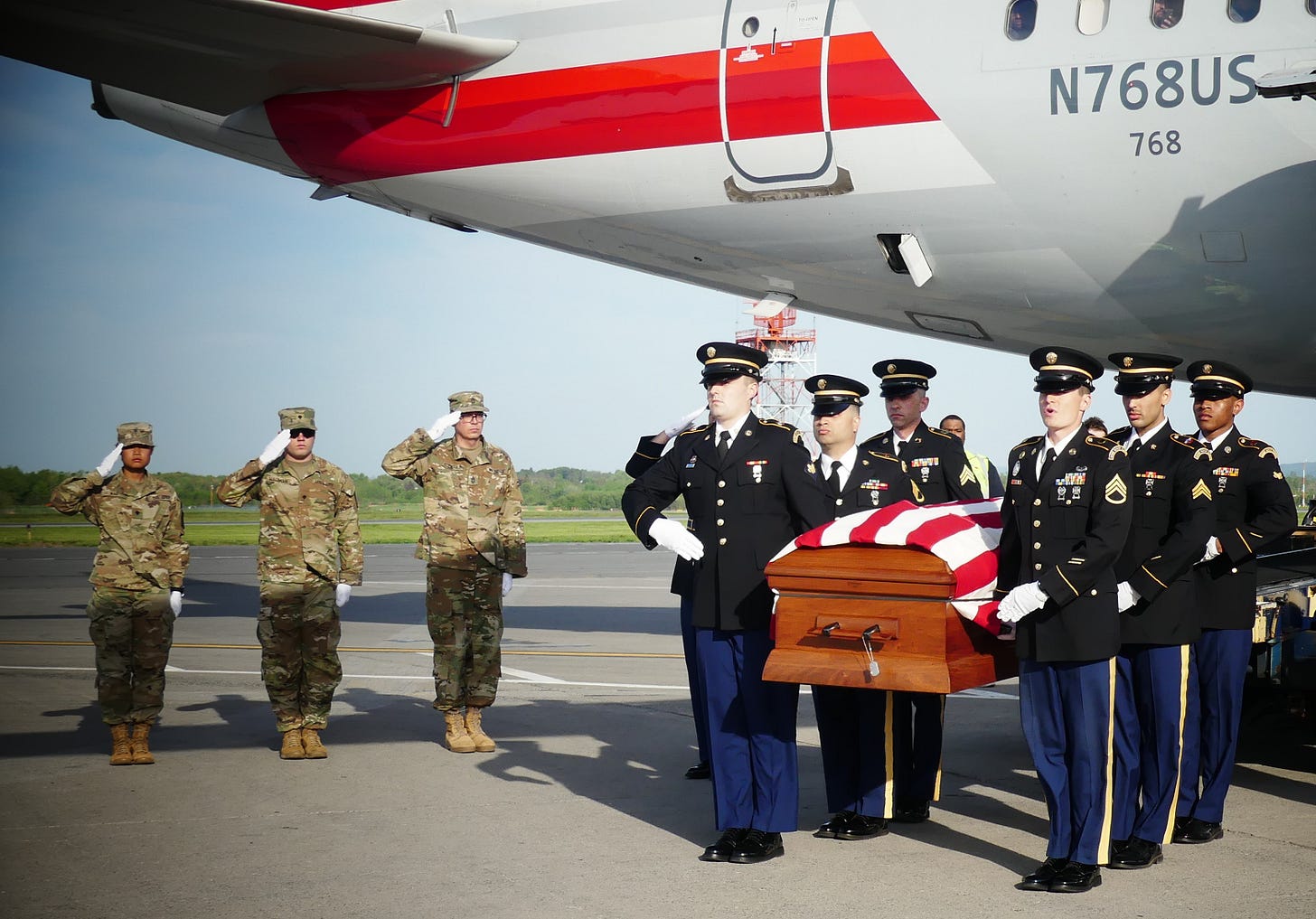Bringing An American Hero Home
And laying him to rest
When he arrived at Hancock International Airport in Syracuse, New York earlier this month, 1st Lt. John Blakeslee Thomas received the traditional rite of every pilot on completing his very last flight. A pair of fire trucks arced sprays of water over the American Airlines jet bearing…
Keep reading with a 7-day free trial
Subscribe to Polemology Positions to keep reading this post and get 7 days of free access to the full post archives.


